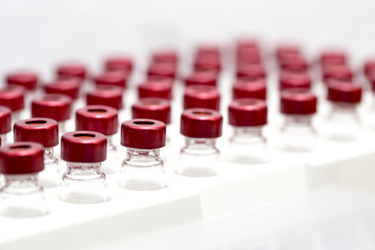New Guide Tackles Best Practices For Making Allogeneic Cell Therapies
A conversation with Erich H. Bozenhardt, United Therapeutics

A comparatively thin body of GMP guidance supports a growing number of allogeneic cell therapies winding their way through clinical pipelines.
In April, the International Society for Pharmaceutical Engineering (ISPE) produced a new guide seeking to address engineering issues related to facility development and design. The ISPE core team that wrote the 140-page guide considered relevant regulations from the U.S., EU, and the Pharmaceutical Inspection Co-operation Scheme, also known as PIC/S.
The ISPE Guide: Advanced Therapy Medicinal Products – Allogeneic Cell Therapy, covers design issues including GMP compliance, risk management and quality control, tech transfer, utilities, HVAC, and the supply chain.
The guide applies only to parenteral therapies. It does not include tissue-based allogeneic products, point-of-care manufacturing, or medical devices for use in combination with ATMPs.
Erich Bozenhardt, an associate director at United Therapeutics and an active member of ISPE, collaborated closely with ISPE’s core team. He also supported the creation of the guide’s 2021 predecessor, which established guidance for autologous cell therapy.
To help us get a better sense of what’s inside the guide, Bozenhardt answered some broad-ranging questions.
What's the current state of manufacturing standards for allogeneic cell therapies? Does this new ISPE guide fill a pressing need?
Nascent is the best way to describe the current state of manufacturing standards for allogeneic therapies. It is just beginning to develop and has a large potential. If you get a chance to look at the FDA-approved allogeneic cell therapies, they fall into two categories: cord blood and tissues.
The ability to replace/repair functional tissues could potentially transform healthcare. However, these therapies are on the leading edge of technology. These novel processes lack scalability. So, these products help a very limited number of patients without better options.
For example, Lantidra can help diabetes patients who cannot control their blood sugar with current treatments and are well enough to undergo immunosuppressive therapy. Developers are going to the next level of helping all diabetics or those who need aggressive management of blood sugar. In order to deliver the impact of that technology, there needs to be advancement in manufacturing technology. This guide is a step in that direction.
It provides good practice guidance on manufacturing allogeneic therapies that developers can use in thinking about their manufacturing platforms and facilities.
Can you describe some of the key differences in allogeneic ATMPs that require unique considerations compared to your typical aseptically manufactured biologic?
The softball answer on what differentiates ATMPs from traditional biologics is the cells. Traditional biologicals are large molecules that can be filtered and are made with well-characterized cell lines.
Barring a few exceptions for vaccines, those cell lines grow faster than human cells and grow in suspension. Many of these differences were explored in the ISPE Autologous Cell Therapy guide, which was the first ISPE guide focused on ATMPs. The key difference between allogeneic and autologous is the disconnect between the patient and the cell source.
This allows treatment of patients who cannot donate cells, the potential for treating multiple patients from one donation, the possibility of creating one cell bank for the life of the product, and additional manufacturing strategies including make-to-stock.
Personnel and material flow play a key part in controlling contamination, but flexibility and modular design seem essential from a practical standpoint. Those characteristics seem like they could be at odds, but maybe not. How does a layout that embraces unidirectional flow also support modularity and flexibility?
If you think about flexibility in terms of being able to adapt to circumstances beyond your control, then unidirectional flow is a great solution to provide flexibility when addressing unknown intra-process contamination risks.
Many of these processes are small-volume and in clinical trials, so managing risk of contamination from one process to another or different viral activity levels within a process is key to having a well-utilized facility.
For example, say that an operator inadvertently gets a vector for investigational product B on their gown during a transduction preparation in a BSC. The cross-contamination risk to commercial product A in the next suite is mitigated because the operator will degown upon leaving the investigational product suite and must regown to enter the commercial product suite. In this case, there would likely be other operational layers of protection to mitigate cross-contamination, which you can read about in the guide.
Modular design isn’t inherently in conflict with good personnel and material flows. Thinking only about the immediate need can lead to a conflict in “adding another module” later. Since that prospective approach does incur cost there is always a balance of enabling the future without over investing.
The entire manufacturing process seems utterly unforgiving, but some of the most risk-heavy steps happen downstream during fill/finish. How does the guide approach de-risking at that stage?
In autologous cell therapies, the risk of not being able to final filter has been tempered in that only one patient would be impacted. Allogeneic cell therapies have the potential to treat hundreds or thousands of patients in a batch, greatly increasing the impact.
This drives developers to look across their entire process and identify contamination risk points. The guide briefly discusses the contamination control strategy concept and then dives into the particular considerations for allogeneic cell therapies.
In your opinion, how will — or should — guidelines for allogeneic ATMPS evolve as time and technology trudge forward?
The technology will advance, the equipment will advance, and our practices will incorporate those new ideas and systems. As those advances come, there will be a point where some of the guidance provided today needs to be updated to current best practices.
While I can’t say exactly when that is, there is an expectation for ATMPs in general that there will be more frequent iteration as these therapies are not at the mature state like small molecules or mAbs. Within ISPE there is a continuous review process of published guides to assess the need to update.
About The Expert:
 Erich H. Bozenhardt is the associate director of process engineering for United Therapeutics in Raleigh, NC, and an active member of ISPE. He has 18 years of experience in biotechnology and aseptic processes and has led several biological manufacturing projects, including cell and gene therapies, mammalian cell culture, and novel delivery systems. He has a B.S. in chemical engineering and an MBA, both from the University of Delaware. He can be reached at by email at erichbozenhardt@gmail.com and on LinkedIn.
Erich H. Bozenhardt is the associate director of process engineering for United Therapeutics in Raleigh, NC, and an active member of ISPE. He has 18 years of experience in biotechnology and aseptic processes and has led several biological manufacturing projects, including cell and gene therapies, mammalian cell culture, and novel delivery systems. He has a B.S. in chemical engineering and an MBA, both from the University of Delaware. He can be reached at by email at erichbozenhardt@gmail.com and on LinkedIn.
